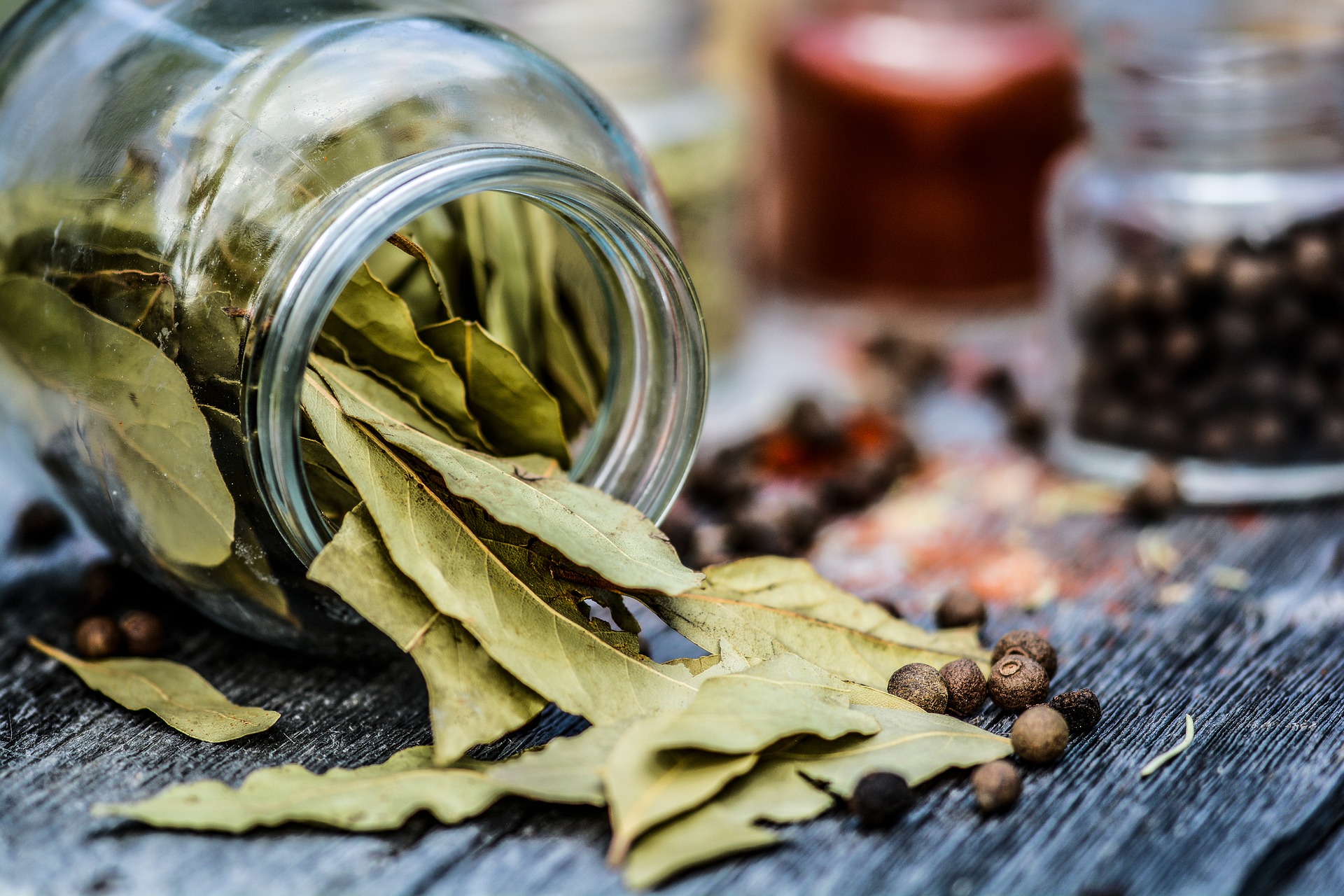When I first started learning how to cook I was all, what is up with bay leaves? You put a leaf in soup, and then take it out, not actually eating it?
Let’s find out a little bit more about this interesting herb.
Origin:
The bay tree is native to Asia Minor, where it spread across the Mediterranean and the rest of Europe. The ancient Romans and Greeks crowned victors of their highly dangerous sports with wreaths of bay leaves.
The bay tree is considered one of the oldest species of trees cultivated.
Growing bay trees:
- Can start out in a pot from a seedling.
- Plant away from other plants so it can spread out.
- Prefer rich, well-drained soil.
- Like a lot of compost.
Drying bay leaves:
Unlike other herbs, bay leaves are best in their dried form. When harvesting leaves from the tree, leaves can be picked by hand or cut off with shears; bay trees do require pruning. Dry leaves in a dark, well ventilated space for about five days.
Freezing bay leaves:
Accordingly to reputable food writer J. Kenji Lopez-Alt, bay leaves stored in the freezer last forever.
Whether drying or freezing bay leaves, do keep them whole.
Foods bay leaves compliment:
First and foremost, bay leaves are used in soups and stews and stocks. Even though they’re discarded afterwards, they really affect the flavor and smell of the soup/stew/stock in a positive way, giving it a tea-like or woodsy-like undertone.
From what I’ve read, it’s difficult to describe exactly how bay leaves contribute to dishes in terms of what specific flavors they bring out, but oddly, they do make a huge difference in a small way.
You can use bay leaves with other slow-cooking dishes such as:
- Roast beast
- Braised meats
- Grilled fish
- Vegetable or pasta dishes with tomato
Do use bay leaves sparingly, because the flavor is strong.
Although bay leaves are virtually always discarded and can be difficult to digest, they aren’t harmful if consumed.
